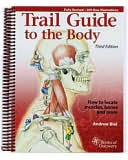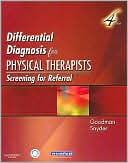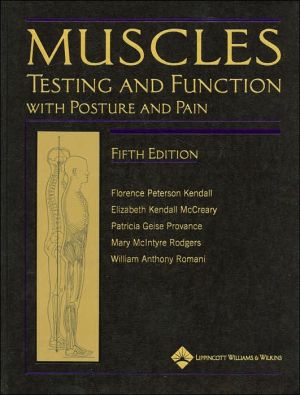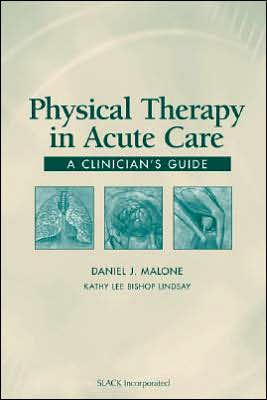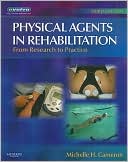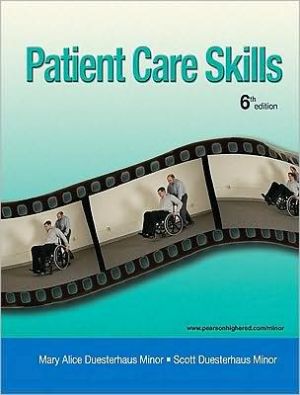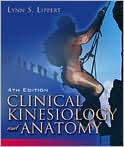Primary Care for the Physical Therapist: Examination and Triage
Specifically designed for physical therapists in the primary care environment, this new resource helps the reader develop the vital communication and differential diagnosis skills necessary to provide high quality patient care and assume a valuable role on the health care team. Comprehensive coverage includes each skill that the physical therapist outpatient practitioner needs to meet the challenges of a changing profession: communication skills, technical expertise, and clinical...
Search in google:
Specifically designed for physical therapists in the primary care environment, this new resource helps the reader develop the vital communication and differential diagnosis skills necessary to provide high quality patient care and assume a valuable role on the health care team. Comprehensive coverage includes each skill that the physical therapist outpatient practitioner needs to meet the challenges of a changing profession: communication skills, technical expertise, and clinical decision-making ability. This reference helps the practitioner quickly develop an accurate physical therapy diagnosis; adapt an examination and intervention approach to meet the individual's cultural, communication, anatomic, and physiologic needs and abilities; triage patients from a physical therapy perspective and decide who requires the expertise of a physical therapist certified specialist; recognize patient symptoms and signs that necessitate communication with other health care providers; and participate in the decision-making process regarding the selection of appropriate diagnostic imaging modalities.Instructor resources are available; please contact your Elsevier sales representative for details.• Promotes safe, effective, and efficient care applicable to physical therapy - the first resource specifically designed for PTs in primary care. • Covers both soft skills (communication and problem-solving) and technical skills (physical examination, differential diagnosis, and ancillary modalities). • Emphasizes the communication skills vital for establishing rapport with patients and gathering data. • Presents everything that a physical therapist needs to know about the patient interview. • Lays the foundation for differential diagnosis and recognition of conditions that may require referral to other health professionals. • Includes coverage of special populations, pharmacology, urgent situations, diagnostic procedures, and more. Doody Review Services Reviewer:Christopher James Hughes, PT,PhD,OCS,CSCS(Slippery Rock University)Description:This book introduces the physical therapist clinician to the concepts underlying the practice of primary care in physical therapy.Purpose:According to the author, the book is intended to serve as a supplemental resource to other books and research publications related to the preparation of therapists assuming their role in the primary care model of health. In today's healthcare environment this book is needed and the author's objectives are met.Audience:It is written for physical therapy students and experienced clinicians alike. The author is a scholar and physical therapist and is well qualified to write the book as are the coauthors of each chapter.Features:The book's 18 chapters are divided into five major sections. The four chapters in section 1 provide a very good overview of primary care medicine and topics related to effective practice. These include evidence-based exam skills, the patient interview, and cultural competence. The next two sections (chapters 5-11) deal specifically with systems review and examination techniques with a patient case presented at the end of the section to reinforce the material. The coverage of concepts in this section is concise and well organized. Section four discusses care for special populations, including adolescents, obstetric patients, the work injured population, and geriatric patients. Even though each of these populations deserves a complete book of its own, the authors of these chapters were able to highlight the unique treatment considerations of each population and the content fit the theme of the book. Section 5 deals with clinical medicine and covers pharmacology, diagnostic imaging, and laboratory tests and values. This information is included to assist the therapist in understanding the role of each of these components in the diagnostic process. This in turn can enhance a physical therapist's communication with other healthcare professionals in a multidisciplinary healthcare system. Overall, each section contains effective figures, diagrams, and schematics and makes good use of tables to keep information easy to understand. The only shortcoming of the book is its brevity, but the author's intent was to provide a supplemental text that would complement other sources. In addition, there is a companion website for students and instructors which includes an image collection, PowerPoint slideshows, patient cases, web links, and examinations. Assessment:This book fills a real need in the educational training of physical therapists. The content is suitable for students learning physical therapy as well as seasoned clinicians who would like to enhance their treatment skills for practice in today's changing healthcare system. I strongly recommend the book because it provides a nice overview of the model of primary care delivery and how the physical therapist can be an integral part.
I. Introduction 1. Introduction to Primary Care Medicine2. Evidence-Based Examination of Diagnostic Information3. Cultural Competence: An Essential Element of Primary Care4. The Patient Interview; The Science Behind the ArtII. Examination/Evaluation: The Patient Interview5. Demographics and Identifying Health Risk Factors6. Investigating Presenting Complaints7. Review of Systems8. The Physical Examination Begins!III. Examination/Evaluation: The Physical Examination Foreword9. Systems Review Including Vital Signs10. Upper Quarter Screening Examination11. Lower Quarter Screening Examination Afterword: Including Patient CasesIV. Special Populations12. The Adolescent Population13. The Obstetric Client14. The Injured Worker Population15. The Geriatric PopulationV. Clinical Medicine16. Pharmacologic Considerations for the Physical Therapist17. Diagnostic Imaging18. Laboratory Tests and ValuesAppendicesConversion Tables
\ Reviewer: Michelle Finnegan, DPT, OCS, MTC, CMTPT, FAAOMPT(Bethesda Physiocare)\ Description: All chapters in this new edition of a book on the role of physical therapists in primary care have been updated or expanded, and several new chapters have been added, to meet the needs in the field prompted by the expansion of direct access in physical therapy. This edition has several returning contributing authors along with many new ones, to provide the most up-to-date information there is in the area of primary care physical therapy. The original book was published in 2005.\ Purpose: Because direct access in physical therapy has expanded over the past several years and continues to advance, the purpose of this book has changed since its first edition. Initially, the book was intended to "provide information designed to help prepare physical therapists to assume a significant role in the primary care delivery model" with a major emphasis on examination and triage related to the physical therapist's potential role. This new edition is intended to "promote a significant role in the primary care practice model for physical therapists, with major emphasis on the examination, triage, and interdisciplinary health care components related to the physical therapist's potential role." With the increasing growth of primary care and direct access in physical therapy, this edition also has a key focus on recognizing red flags early on in order to facilitate consultation with the appropriate healthcare practitioner. As more therapists become patients' initial contacts for their musculoskeletal conditions, there is a growing need for practitioners to become efficient at differentiating symptoms that have a musculoskeletal cause from those that present as a musculoskeletal issue, but have another origin. \ Audience: The book is designed for students, residents, fellows, and experienced clinicians. It is well organized and written, making it easy for readers at any level of experience to read and understand. The editor is a leading authority in this area, and has written several books and taught numerous seminars on medical screening and differential diagnosis. \ Features: The first of the book's three sections provides a foundation, explaining the various models of primary care physical therapy currently in place, diagnostic information including reliability, validity, and likelihood ratios, cultural competence, pharmacology considerations, and how to be effective during a patient interview. The second section, on examination/evaluation, has 10 chapters organized in the way that clinicians would typically gather information. The first two chapters describe symptom investigation, first by body region and then by symptom, helping readers in evaluating a given area as thoroughly as possible. The third section is dedicated to topics in special populations such as pediatric/adolescent, obstetric, and geriatric, and includes new chapters on health and wellness and the nine conditions physical therapists do not want to miss. Both are great additions as the field continues to move into the direct access model, where prevention and life-long health and well-being are important facets of care. All chapters are well referenced with the most up-to-date-research. Throughout the book, tables, graphs, and pictures help illustrate the material. Other helpful features include appendixes after several chapters with forms for clinicians to use and/or adapt for medical screening, surveys and testing materials on specific topics, case scenarios, and glossaries of terms. The only minor shortcoming is that all of the illustrations are black and white. Color illustrations would highlight key areas better and improve readability. However, the lack of color does not detract from the wealth of knowledge in this book. \ Assessment: This is an important update and a valuable addition to the field. Written by experts, it offers the best and most comprehensive information available on primary care for physical therapists and complements other books in this area. Because of how well organized and written it is, this book would be an essential addition to the personal libraries of clinicians at any level, as well as a popular required text in physical therapy programs.\ \ \ \ \ From the Publisher"This is an important update and a valuable addition to the field. Written by experts, it offers the best and most comprehensive information available on primary care for physical therapists and complements other books in this area. Because of how well organized and written it is, this book would be an essential addition to the personal libraries of clinicians at any level, as well as a popular required text in physical therapy programs."\ -Michelle Finnegan, DPT, OCS, MTC, FAAOMPT (Bethesda Physiocare)\ c/o Doody Enterprises Inc.\ \ \

